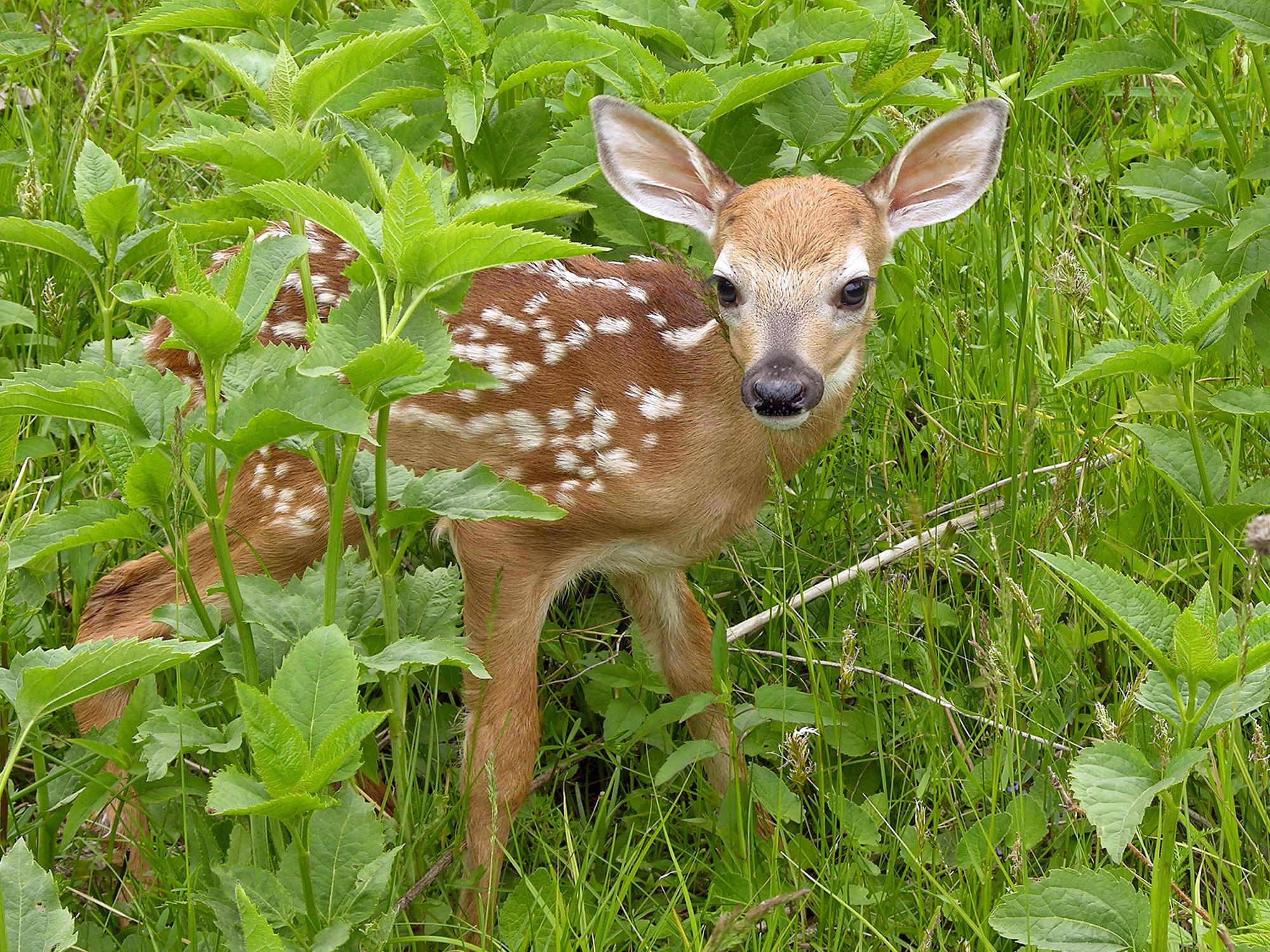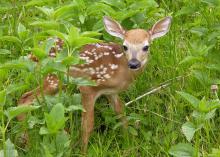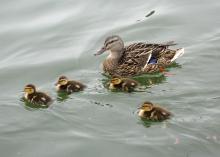Information Possibly Outdated
The information presented on this page was originally released on May 10, 2019. It may not be outdated, but please search our site for more current information. If you plan to quote or reference this information in a publication, please check with the Extension specialist or author before proceeding.
Wildlife need room to grow each spring
STARKVILLE, Miss. -- Spring is a great time of year to enjoy new beginnings, and flowers and leaves are not the only signs of new life. Plenty of food and warmer weather make this the ideal time for wildlife to mate and raise their offspring.
The young, formative years are perfect for learning and developing, and baby animals are no different from baby humans in this regard. Important life skills need to be mastered while individuals are young if they are going to be able to survive in a harsh world. Even innate or natural skills often must be mastered through practice.
For example, consider flight in birds. Flying is a very complicated process, even though it is natural to birds. Flight is not only the ability to move through the air using feathered wings. The bird also needs to change directions without falling out of the sky and to land without crashing or missing the landing site.
Young animals must also learn to find food. Hawks must learn to wait until just the right moment to pounce on their prey. Squirrels need to figure out which acorns are good to eat and which ones are rotten. Wolves need to learn how to work in packs to take down large prey like moose or elk.
Many kinds of wildlife even seem to suffer through a “teenage” period. Like human teenagers, they are ready to strike out on their own, but they still need a little more training and oversight. News stories about “misbehaving” wild animals often feature adolescents that made a bad choice to raid a garbage can or enter a dwelling. They may wander off to explore, which can result in well-meaning people stepping in to help the “lost” or “orphaned” animal.
These springtime lessons and adventures often put young animals in the paths of people. Many folks do not realize the animal is likely very close to its home. They don’t understand that important life lessons need to be learned or that a parent animal may be nearby, watching and protecting its offspring. People are tempted to intervene.
As a result, many baby birds, rabbits, raccoons, opossums, fawns and other wild animals end up “rescued” and in veterinary hospitals or rehabilitation centers. This fate is unfortunate for two reasons.
First, state and federal laws do not allow wild animals to be removed from the environment without the appropriate permits. Second, in most cases, it is best to let the animal be raised as nature intended -- by its parents in the natural world. This is the best way to ensure wild populations of animals remain strong and healthy.
The world is a challenging place for young animals. Let’s make sure we give them all the room they need to grow and develop without adding any undue human interference.

Editor’s Note: Extension Outdoors is a column authored by several different experts in the Mississippi State University Extension Service.








